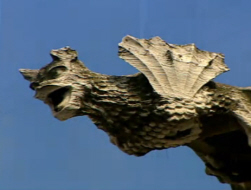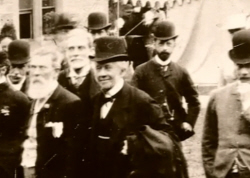Post-Roman Pottery
Civilisation Survives
Britain AD: King Arthur’s Britain

Crumbling Defences
The fall of Rome led to a period of political instability throughout Europe. Countless barbarian invaders swept across the provinces of Rome looting
and pillaging the land. St Jerome laments this terrible time. “Savage tribes in countless numbers have overrun all parts. And those which the sword
spares, famine ravages. I cannot speak without tears.”
But what became of Britain on the outskirts of this crumbling empire? The trouble is, there is a gap in the historical record. At one end we have
410, and date as indelible and emotive as 1066. 410 was the year that Rome “look to your own defences”.
At the other end we have 597, the year in which Pope Gregory I of Rome converted the Anglo-Saxons to Christianity.
In between, there are only fragments and stories? A murky historical no-man’s land, the perfect breeding ground for myths and legends.
Emerging from the shadows of this period is the figure of King Arthur, who, if he existed at all, rose to prominence in these troubled years. But
here lies a crucial paradox. How can a period of Dark Age barbarism also have produced the greatest folk hero Britain ever had?

Legendary King Arthur
Was Arthur invented to make up for the lack of real history? Or is there some foundation of these peculiar myths?
As a pre-historian, I’m used to dealing with long periods without any written records, but that doesn’t mean that nothing happened. I’m going to
find it what really did happen in this mysterious time. I’m going to start where the fall of the Roman government must have been most keenly
felt, the city.

York Statue
The Romans built a network of civic centres across Britain. I went to York, one of the largest of these, to find out what happened after the legions left.
Underneath the mediaeval city walls, it’s possible of see the earliest layers of the city’s rich history. Whilst the Roman, and later Viking, layers
provide plenty of archaeological evidence, the elusive Dark Age layers contain few recognisable artefacts. It’s almost as if the period is invisible
to archaeologists.
However, by the side of the Roman bridgehead in York, archaeologist Mark Whyman has made a breakthrough. By re-examining thousands of pieces of
pottery thought to be part of the city’s Roman history, he has begun to shed some light on the city’s Dark Age past.

Mark Whyman
Mark Whyman “One thing that does happen at the end of the fourth century in Britain is that coins disappeared. Coins are crucial to establish a chronology.”
With no coins available, Mark had to find a new way of interpreting the evidence.
Mark Whyman “We were looking for pottery that might have continued in production beyond the end of Roman Britain.”
The pottery Mark was looking at could not be matched to any traditional Roman product. Mark, why do you believe this rather strange-looking
stuff is the fifth century?
Mark Whyman “Well, this is calcite gritted ware. It’s a late Roman coarse pottery manufactured in huge quantities in East Yorkshire. This
is from a site excavated by the side of the Roman bridgehead in York.”
The layers that produced Mark’s pottery must be later than the Roman period. This suggests that pottery was being manufactured in York after the
Romans left.
This business of making pottery in the fifth century has put the cat among the pigeons.

Victorian archaeologists
Mark Whyman “The received view of Roman Britain, one that’s still quite widely held, has been that Roman Britain’s end is exceedingly sudden and
the archaeological material required to understand the past just isn’t being made. I set out to identify a type of artefact which I could say is
manufactured in the fifth century, to argue against the idea of everything coming to a sudden halt.”
Life in York did not come to a standstill in 410. Mark had found evidence for some kind of activity in the city after the Romans left. And he
is not alone. All over the country, archaeologists are piecing together a picture of dark age Britain very different from the conventional
story of collapse.
It’s time to start rewriting the history books. Archaeology, like all humanities, is a product of its time. And Victorian archaeologists were
part of the British Empire which compared itself to Rome. So they had every reason to suggest that when great empires collapse, disaster and
chaos follow.




